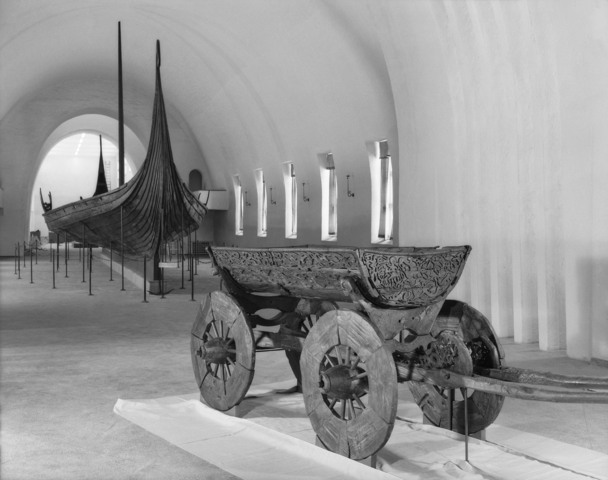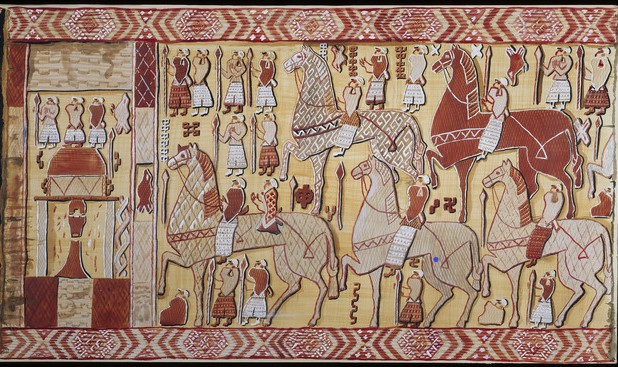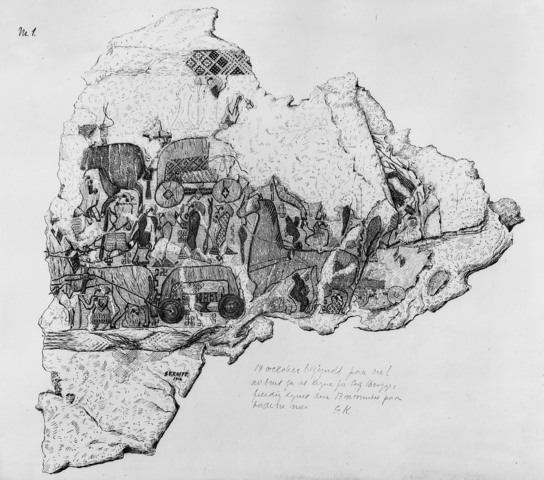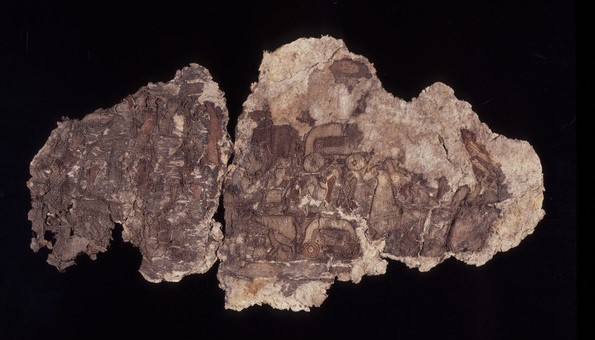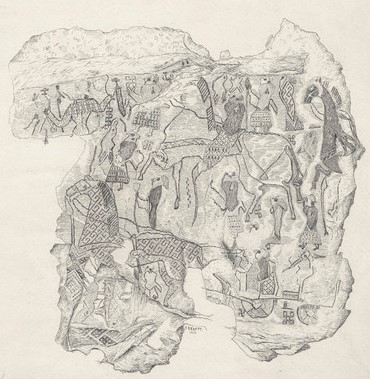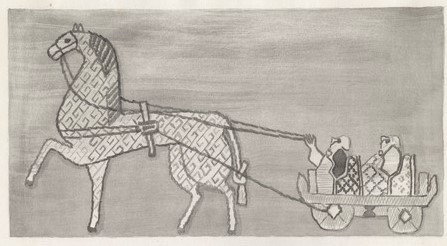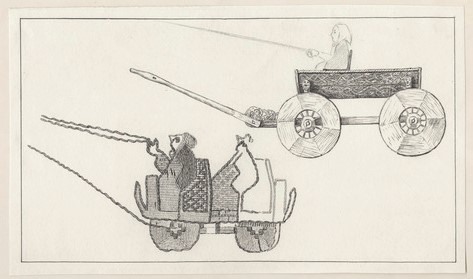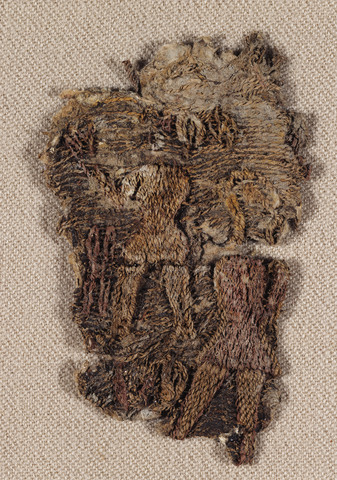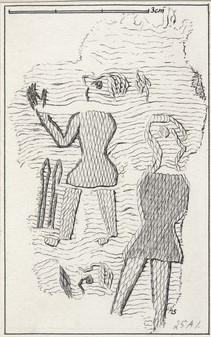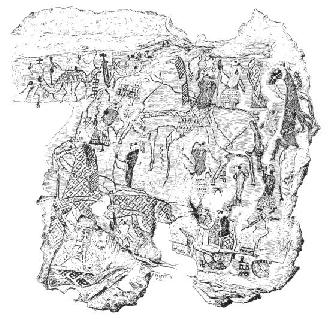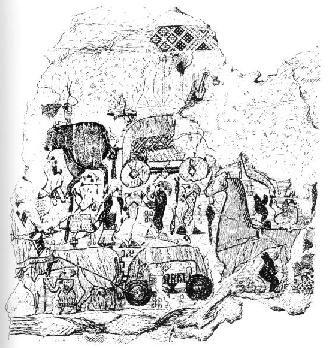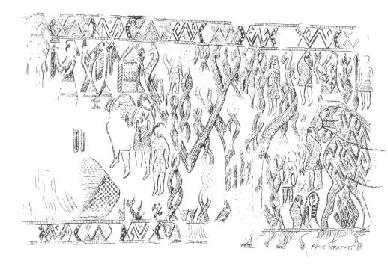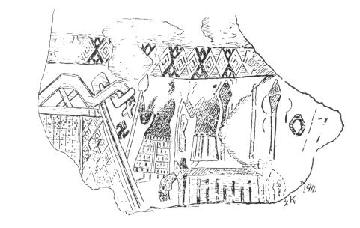|
|
| |
|
|
On August 6th 1903, a farmer named Oskar Rom dug into a
mound on his property at the Lille Oseberg farm in
Slagen, in the county of Vestfold, Norway and discovered
what appeared to be pieces of a ship, and thus contacted
Professor Gabriel Gustafson in Oslo, who visited the
farm two days later. Based on his initial investigation,
Gustafson determined that the mound contained a ship
burial from the Viking era, but decided to wait until
the following summer to excavate. Ultimately, the dig
revealed the remains of two women buried in a ship no
later than autumn of 834 AD, interred with a ceremonial
wagon, four ornate sleds, an array of household goods,
and a number of domestic animals. Remarkably, the burial
was furnished with a lavish array of textiles,
constituting a key feature of the Oseberg find.
The grave
chamber contained the largest collection of textiles and
textile tools ever been found in a single grave. The
collection consists of a number of narrow tapestries
thought to have lined the chamber, as well as bedlinens,
woven woolen blankets, tablet bands and a large
collection of cloth fragments from clothing, sails,
tents, rugs and curtains, in addition to remains of silk
fabrics and silk thread embroideries imported from
Central Asia. The textiles themselves vary greatly in
quality, weaving techniques and materials. Researcher
Anne Stine Ingstad has divided them into 19 different
groups according to quality and purpose. Coarse wool
fabrics woven with geometric patterns, predominantly
diamonds and crosses, were found in abundance throughout
the grave, perhaps representing the remains of draperies
used in the furnishing. The ornamental tapestries are
woven from wool with a weft made of plant material,
possibly flax, which has since disintegrated. They
portray a variety of people in procession and at war,
some clearly in costume, along with animals, wagons, and
buildings, possibly representing ritual scenes,
suggesting the older woman was of great importance.
Altogether fifteen different silk materials are
represented, mostly cut into narrow ribbons, which may
have been used as adornments. Multi-colored silk
embroideries in patterns of tendrils, spirals, animals
and geometric designs may also have trimmed the women’s
garments. The textile tools include: 5 different weaving
looms, 1 tablet weaving loom, 1 manual spindle and
distaff, 1 weaving reed, 5 balls of wool, 1 device for
winding wool, 2 yarn reels, 2 linen smoothers, 1
smoothing iron, 3 wooden needles, 1 pair of iron
scissors, and various small implements for spinning and
textile work.
|
The Ritual Wagon Procession
Watercolor Reconstruction of the Oseberg Tapestry
by
Mary Storm, 1940. |
|
|
Although difficult to interpret, the scene
appears to represent a religious procession of three
horse-drawn wagons accompanied by people on foot. The
two figures riding in the wagon (lower middle left of
the conjoined imnage above) may represent an idol and
his or her priest(ess). A ceremonial wagon ornately
carved with figures (pictured at the top of the page),
was found with the tapestry. The front panel of the
wagon is decorated with interwined animals, including
cats, suggesting to some that the older woman of the
Oseberg burial may have been a priestess of Freyja. The
remaining two covered wagons, which appear to follow the
lead wagon, may plausibly contain religious objects of
some kind.
A horned figure (at the top far left) leads the procession, accompanied by
a man either accompanied by or carrying a four-leafed
symbol, which may be mounted on a staff. The same
symbol appears between the wheels of the lead wagon. The
comparatively larger size of the horned man
may indicate his status as a deity,
possibly Odin. The male figure behind him bearing
the symbol is followed by eight women in procession.
A similar procession of one man with up-raised arms and
eight women can be seen on stones of the
Kivik King's Grave, along with a wheeled chariot,
drawn by two four-footed animals, apparently
representing horses, demonstrating the great age of this
processional ritual. A similar procession of women in
hooded robes is found on the Garde
Bote Picture Stone from Götland. The building in the
direct center of the conjoined image above (or on the
left side of the right panel) is thought to
represent a temple or hall used for ritual activity.
Another fragment of the tapesty (see below) depicts a
tree in which human bodies are hung, reminiscent of
sacrificial trees described outside the heathen temples
at Uppsala and Lejre in later written accounts. This
leaves little doubt that the procession depicted in this
scene is religious in nature.
|
Images of the Wagon Procession by Mary Storm c.
1939-1940:
Left Side of the Tapestry showing ritual wagon
procession led by a horned figure:
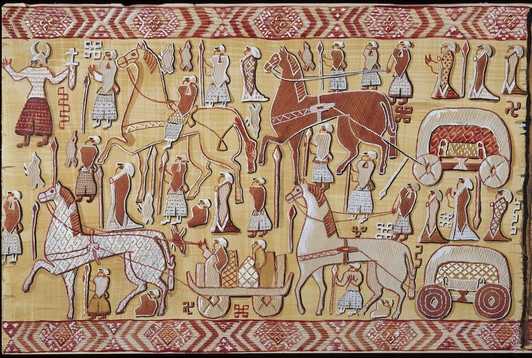 |
|
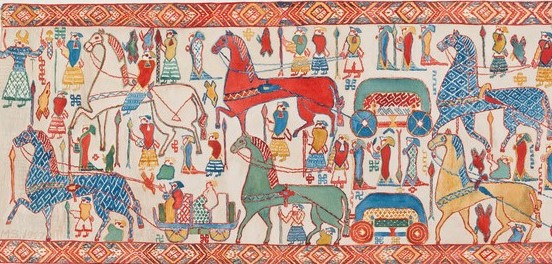 |
|
|
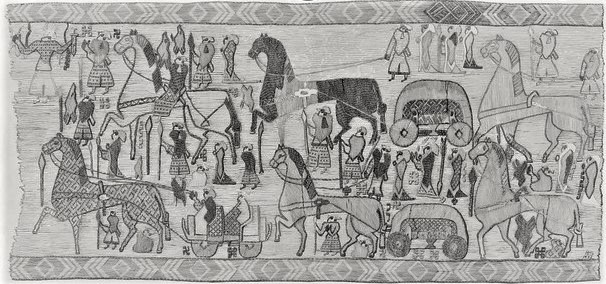 |
|
|
Right Side of the Tapestry showing "Temple" (on left):
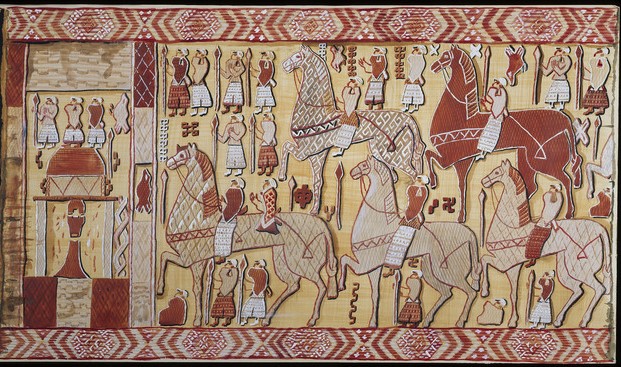
|
Black and White Drawing of the Left and Right
panels:
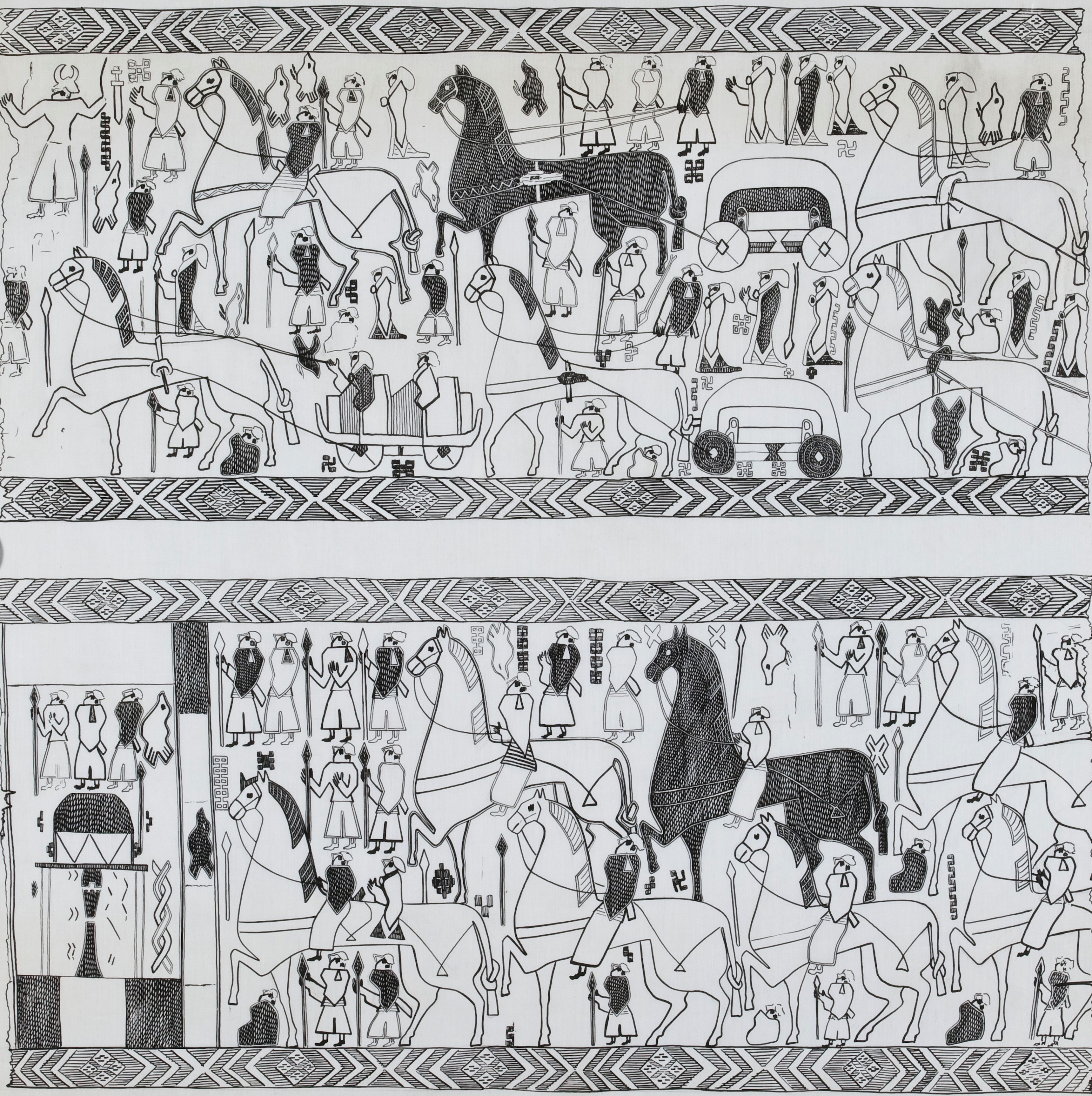
|
|
|
|
|
|
Fragments of the Wagon Procession |
|
|
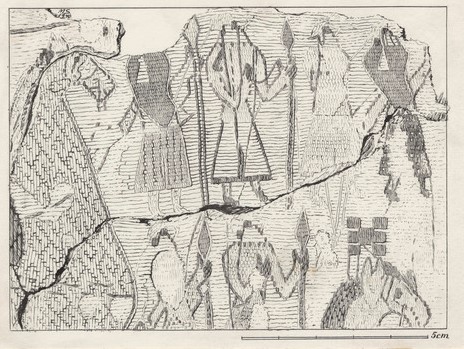 |
|
|
|
Drawings by Sofie Krafft
c. 1916:
|
Group of Riders |
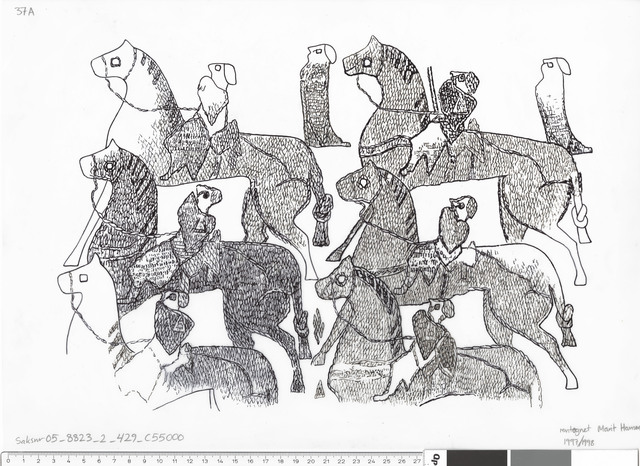 |
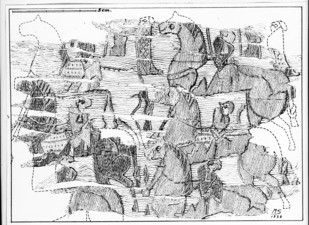 |
|
The Sacrificial Tree |
The Oseberg tapestry shows a religious wagon
procession and a scene of apparent human sacrifice,
in which human bodies hang from a tree. The tapestry
provides archaeological support for
Adam of Bremen's account of the Uppsala Temple
in the 11th century, where nine men are said to have
been hung in a sacred grove along with various types
of animals as a sacrifice outside of the temple. A
fragment of the actual tapestry is pictured below,
along with artistic representations of the same
scene.
|
Adam of Bremen writes: "It is customary also to
solemnize in Uppsala, at nine-year intervals, a
general feast of all the provinces of Sweden. From
attendance at this festival no one is exempted Kings
and people all and singly send their gifts to
Uppsala and, what is more distressing than any kind
of punishment, those who have already adopted
Christianity redeem themselves through these
ceremonies. The sacrifice is of this nature: of
every living thing that is male, they offer nine
heads with the blood of which it is customary to
placate gods of this sort. The bodies they hang in
the sacred grove that adjoins the temple. Now this
grove is so sacred in the eyes of the heathen that
each and every tree in it is believed divine because
of the death or putrefaction of the victims. Even
dogs and horses hang there with men. A Christian
told me that he had seen 72 bodies suspended
promiscuously. Furthermore, the incantations
customarily chanted in the ritual of a sacrifice of
this kind are manifold and unseemly; therefore, it
is better to keep silent about them. "
|
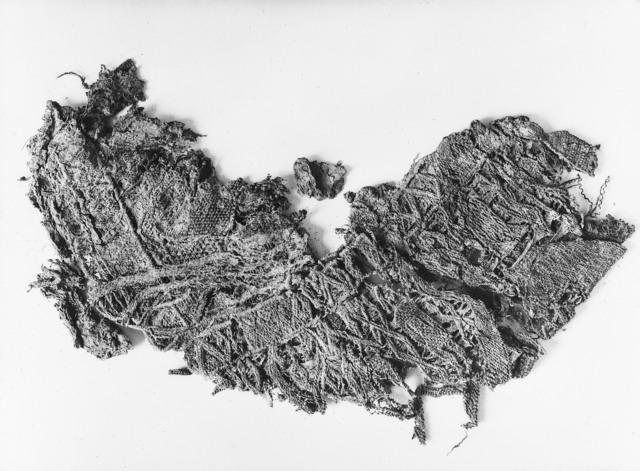
|
|
|
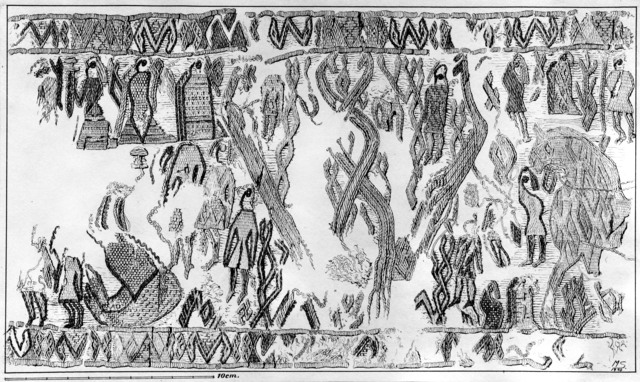 |
|
|
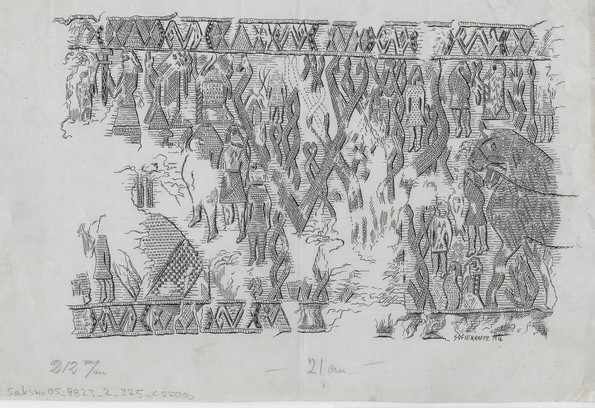 |
|
|
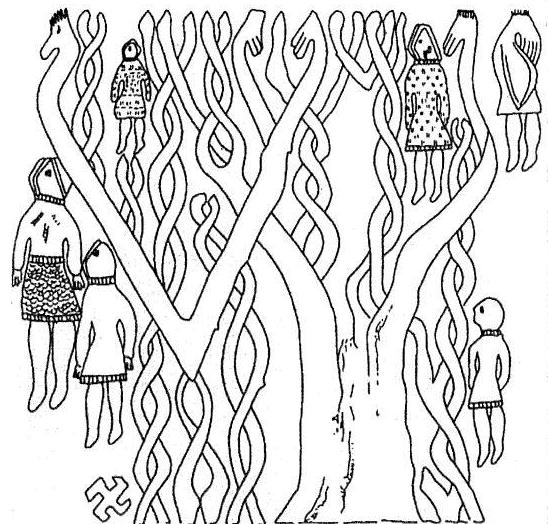
Image courtesy of Peter Robinson who draws attention to
the "horse-head" terminals at the ends of the tree
branches, suggesting
they may reflect the name Yggdrassil, which means "Ygg's
[Odin's] horse".
|
Costumed Figures
Indicating Participation in Ritual Activities
|
"The images contained in the Oseberg tapestry are
often extremely unclear and enigmatic, but
nonetheless clear enough to suggest that what is
being portrayed in the pictures should be viewed in
a ritual context. This is evident not only in the
wagon procession, but also in the row of dancing
female figures, and the line of celebrants who have
a stance similar to that often depicted on the
Bronze Age petroglyphs. ...Bearing this ritual
background in mind, a more detailed examination can
now be made of the costumed figures which occur both
on those tapestry fragments depicting the procession
itself, and on other fragments of less certain
context. One of the latter fragments, for example,
contains the image of an armed male figure, clad in
what appears to be a complete animal skin (except
for a hole for the nose and mouth), approaching a
larger figure who is wearing what seems to be a
bull-horned helmet and carrying a pair of crossed
spears (or perhaps twigs) in his left hand. The
horned figure reappears, more clearly, in one of the
procession fragments, again holding a pair of
crossed spears in one hand, but now grasping a sword
by the blade or sheath with the other. Another
fragment, which might have originally been attached
to the section containing the skin-clad man, depicts
a group of women bearing shields. Some, however,
seem to be wearing boar-like animal masks and skins,
causing Hougen to class them as 'shield-maidens' (valkyrur),
with boar-heads. On yet another fragment, another
female clad as a bird of prey with wings and a bird
head appears standing in front of what has
been interpreted as a temple building."
—Terry Gunnell, The Origins of Drama in
Scandinavia (1995) pp. 60-61.
|

Two Boar-Headed women with shields
confronting horned men with crossed spears
|

Horned man with crossed spears
confronting man in bear-skin
|
| |
|
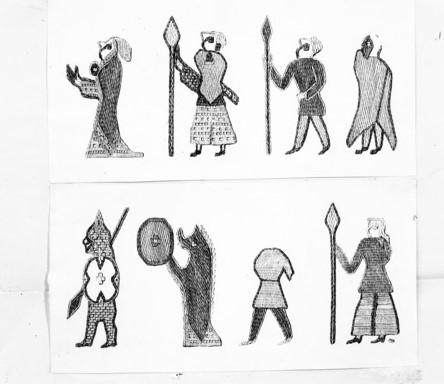
Various Figures |
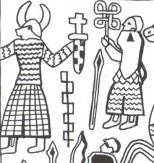
Horned Man,
possibly representing Odin,
followed by man carrying a symbol.
|
| |
|
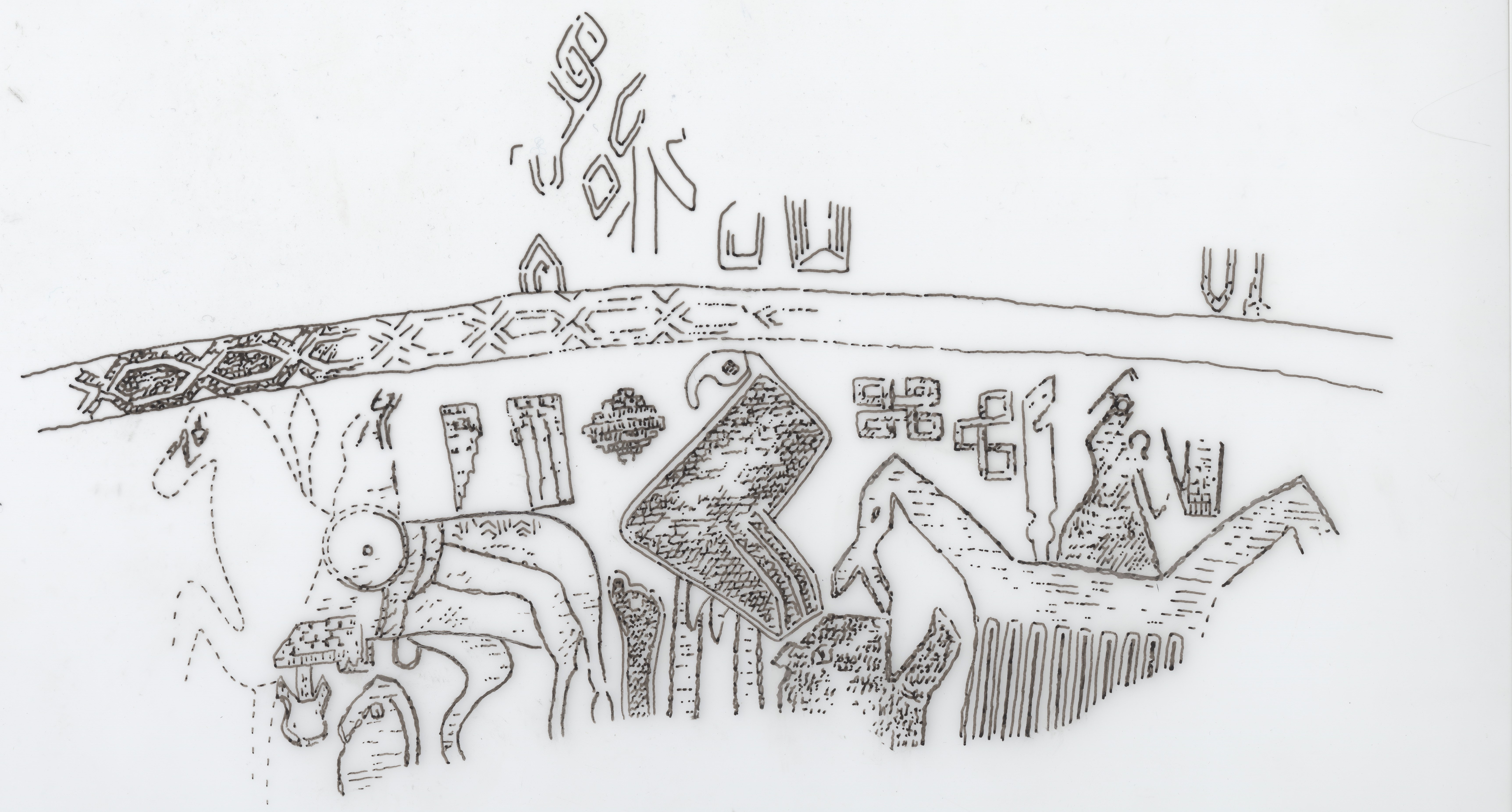
The Bird-Headed Woman |
| |
|
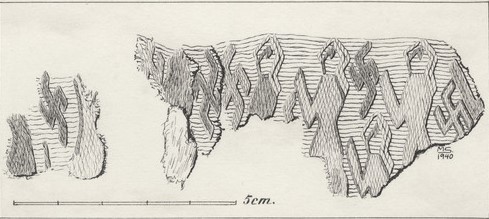
Female Dancers |
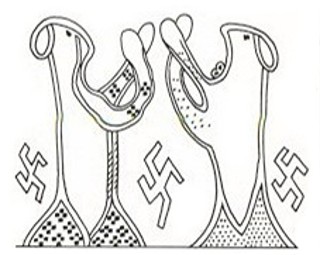
Female Dancers
|
| |
|
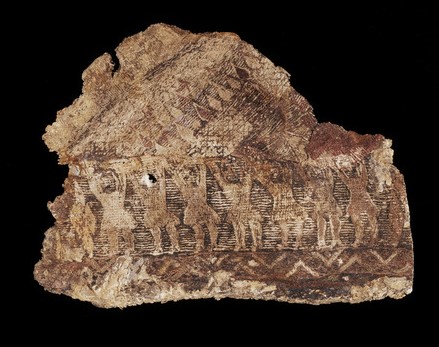
Celebrants with Raised Arms
|
| Geometric Patterns |
 |
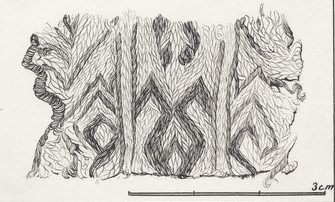 |
| |
|
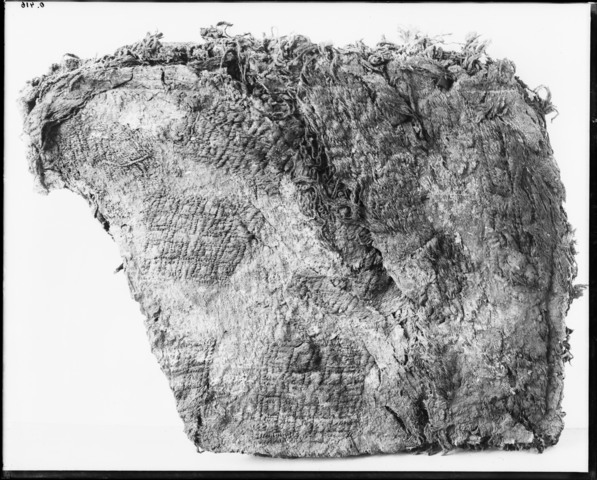 |
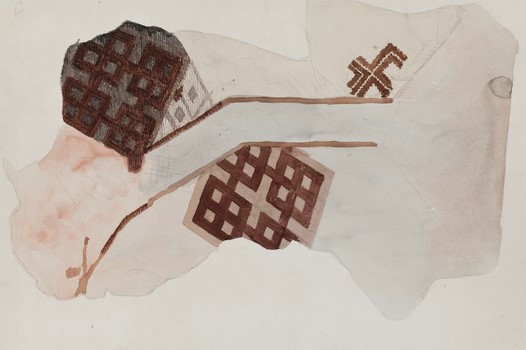 |
|
The Wagon and the Sled
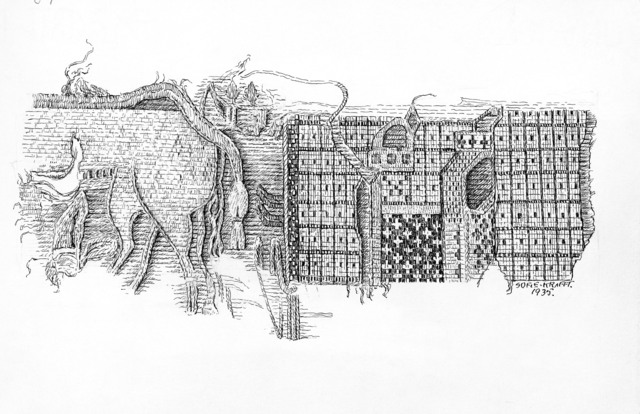
|

|
|
Folded Fragments with Human and Animal figures |
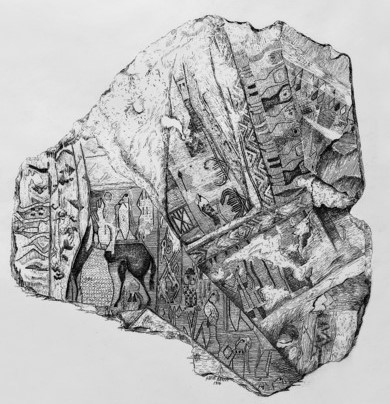 |
 |
CUT SILK & SILK
THREAD EMBROIDERIES
|
 |
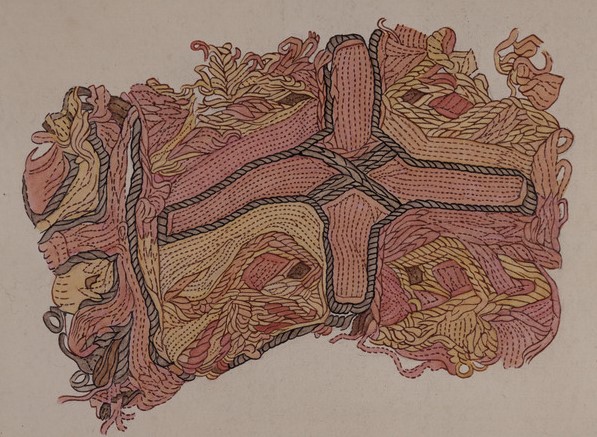 |
| |
|
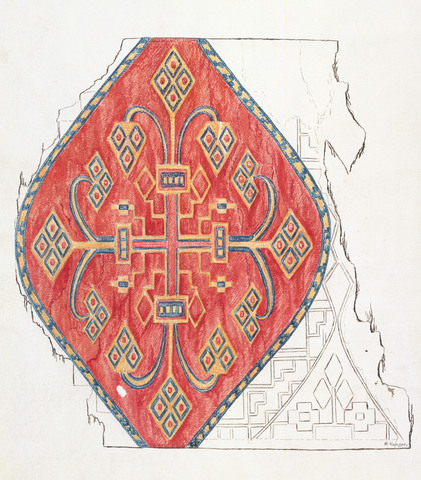 |
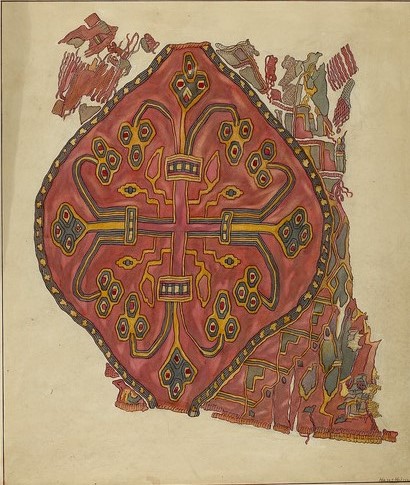 |
| |
|
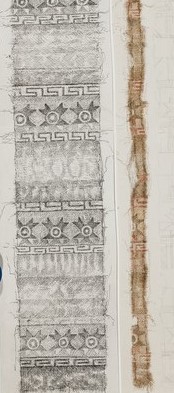
Pattern Reconstruction from a Silk
"Ribbon" |

"Ribbons" of Cut Silk |
|
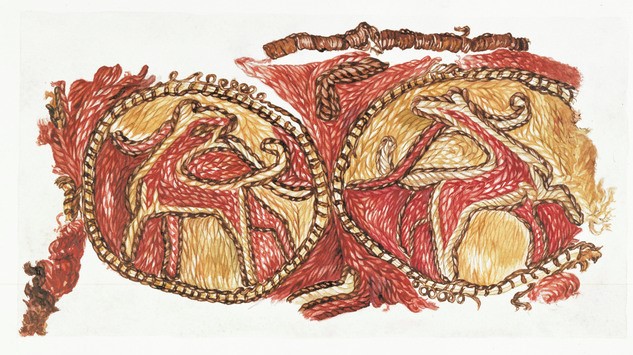
Watercolor Reproduction of Silk Embroideries
|

Illustration of silk embroideries tendril patterns.
|
|
|
